Villa Lontana Records presents Tomaso Binga’s Opera Poesia, the first comprehensive audio collection of Binga's poetry, performed by the artist and recorded by Villa Lontana Records between August 2023 and February 2024. The LP includes a 52-page booklet featuring scans of Binga's original poem scores, written between 1976 and 2023.
Tomaso Binga (Bianca Pucciarelli Menna, b. 1931) works within the realms of visual and sound poetry, using language to explore and challenge traditional notions of gender. Her practice examines the rights, social roles, and opportunities historically granted to women. Adopting a masculine pseudonym in 1970, she transformed it into an inseparable part of her identity, using it as a tool for artistic and poetic experimentation in verbal-visual writing. The pseudonym serves both as an ironic gesture and a critique of gender classifications, playfully mocking male privilege across domestic, professional, and artistic spheres. "Tomaso" directly references Filippo Tommaso Marinetti, with the omission of one ‘m’ symbolizing the loss of a rib, linking it to a specific period in Italian art.
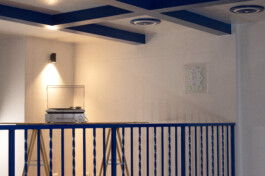
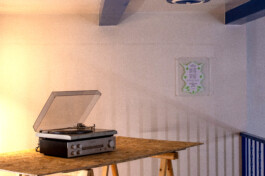
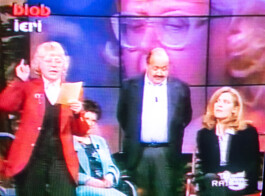
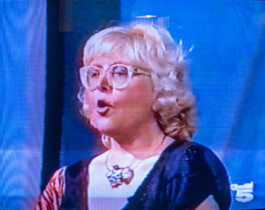
Binga began her performative practice in the early 1970s, debuting with Vista Zero at Palazzo Comunale in Acireale in 1972. Archival images from this performance appear on the album cover of Opera Poesia, depicting the artist in a white dress with her head wrapped in gauze, leaving only her eyes visible. During the performance, she progressively obscured her vision by applying cut-out paper eyes to her face. In 1976, she developed Scrittura Vivente, a pivotal series in her artistic research, where letters of the alphabet were formed by the female body in various positions. Binga’s continuous engagement with cultural, visual, and linguistic discourse remains central to her work. She actively produces object-books, participates in sound poetry events, and publishes in numerous poetry books and magazines. Her practice fuels the ongoing conversation on gender and equality, consistently challenging linguistic and visual stereotypes—subverting, dismantling, or repurposing them in unexpected ways. This project and presentation at La Pulce, conceived by Vittoria Bonifati, features previously unreleased material from Tomaso Binga’s archive. It includes excerpts from her guest appearances on popular television programs, such as the Maurizio Costanzo Show and an episode of BLOB from the 1990s.
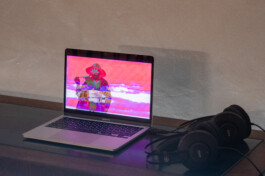
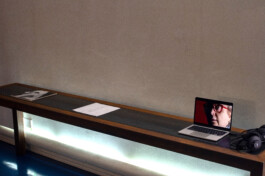
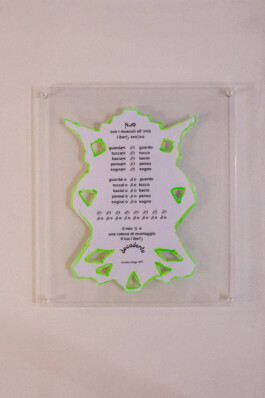
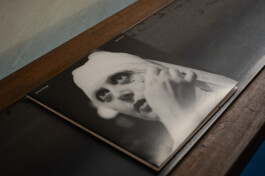
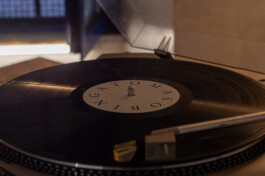
The Maurizio Costanzo Show was a groundbreaking talk show filmed in Rome that reshaped Italian television. Functioning as a media salon, it brought together a diverse and eclectic mix of guests. BLOB, on the other hand, is a daily 30-minute program still airing on the Rai 3 public television channel. Through a sharp and ironic juxtaposition of clips from public and private broadcasts, BLOB critiques the role of television in shaping political and social narratives. By selecting unedited footage from the previous day and omitting verbal commentary, the program exposes the constructed nature of media discourse. The presentation also includes a selection of music videos produced in collaboration with Luigi Ceccarelli, released between 2017 and 2019.
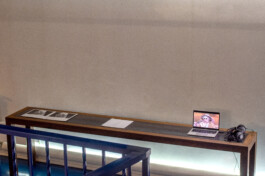
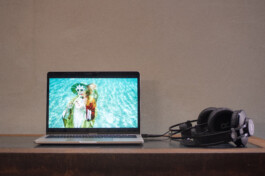
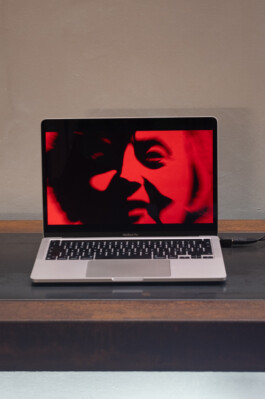
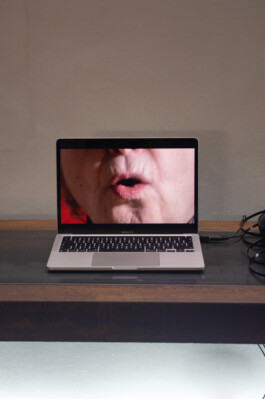
Installation views at La Pulce, February–March 2025. All photos by Tilde Snyder.
Villa Lontana Records presents Tomaso Binga’s Opera Poesia, the first comprehensive audio collection of Binga's poetry, performed by the artist and recorded by Villa Lontana Records between August 2023 and February 2024. The LP includes a 52-page booklet featuring scans of Binga's original poem scores, written between 1976 and 2023.
Tomaso Binga (Bianca Pucciarelli Menna, b. 1931) works within the realms of visual and sound poetry, using language to explore and challenge traditional notions of gender. Her practice examines the rights, social roles, and opportunities historically granted to women. Adopting a masculine pseudonym in 1970, she transformed it into an inseparable part of her identity, using it as a tool for artistic and poetic experimentation in verbal-visual writing. The pseudonym serves both as an ironic gesture and a critique of gender classifications, playfully mocking male privilege across domestic, professional, and artistic spheres. "Tomaso" directly references Filippo Tommaso Marinetti, with the omission of one ‘m’ symbolizing the loss of a rib, linking it to a specific period in Italian art.




Binga began her performative practice in the early 1970s, debuting with Vista Zero at Palazzo Comunale in Acireale in 1972. Archival images from this performance appear on the album cover of Opera Poesia, depicting the artist in a white dress with her head wrapped in gauze, leaving only her eyes visible. During the performance, she progressively obscured her vision by applying cut-out paper eyes to her face. In 1976, she developed Scrittura Vivente, a pivotal series in her artistic research, where letters of the alphabet were formed by the female body in various positions. Binga’s continuous engagement with cultural, visual, and linguistic discourse remains central to her work. She actively produces object-books, participates in sound poetry events, and publishes in numerous poetry books and magazines. Her practice fuels the ongoing conversation on gender and equality, consistently challenging linguistic and visual stereotypes—subverting, dismantling, or repurposing them in unexpected ways. This project and presentation at La Pulce, conceived by Vittoria Bonifati, features previously unreleased material from Tomaso Binga’s archive. It includes excerpts from her guest appearances on popular television programs, such as the Maurizio Costanzo Show and an episode of BLOB from the 1990s.





The Maurizio Costanzo Show was a groundbreaking talk show filmed in Rome that reshaped Italian television. Functioning as a media salon, it brought together a diverse and eclectic mix of guests. BLOB, on the other hand, is a daily 30-minute program still airing on the Rai 3 public television channel. Through a sharp and ironic juxtaposition of clips from public and private broadcasts, BLOB critiques the role of television in shaping political and social narratives. By selecting unedited footage from the previous day and omitting verbal commentary, the program exposes the constructed nature of media discourse. The presentation also includes a selection of music videos produced in collaboration with Luigi Ceccarelli, released between 2017 and 2019.



